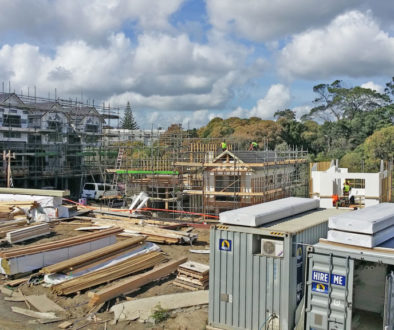Build-to-rent property developments offer renters better quality and security of tenure, real estate
The release of the report Build-To-Rent, Who? What? Where? follows a public statement last week by Housing Minister Phil Twyford that he was seeking advice on encouraging more build-to-rent development, possibly with the use of Crown land.
These developments were multi-unit residential buildings and developments specifically built to provide long-term rentals, rather than be sold individually.
They were often owned and operated by institutions and came in a variety of forms like apartments, units and townhouses. Gyms were common in many overseas build-to-rent developments, the report said.
They are well-established accommodation in the United States where there were about 21 million multi-family residences, had taken off recently in the United Kingdom and were in their infancy in New Zealand and Australia.
There were only a few hundred households in build-to-rent developments in Australia and New Zealand. They were mostly singles and couples at the pre-home ownership stage.
CBRE said they could provide renters with long-term rental security and quality accommodation and it predicted they would be a growth sector, as runaway house prices had left few alternative options for locked-out households other than long-term renting.
CBRE senior research analyst Tamba Carleton said the size of the renting market had increased faster than the rate of general population growth putting more demand pressure on existing rental stock.
In New Zealand the number of renter households rose in ten years by 120,000 to 600,000 taking the percentage of households renting to 34 per cent, while in Australia the number had climbed by 500,000 to more than 2.5 million taking the percentage to 31 per cent.
CBRE senior research analyst Tamba Carleton says runaway house prices have left few alternatives for locked-out households other than long-term renting.
“Even now with several major markets experiencing price corrections, getting onto the property ladder will still prove unattainable for many, which is driving interest in more attractive, long-term rental options,” she said.
The CBRE report said New Zealand and Australia’s rental markets were essentially “cottage industries” run largely by landlords with one or two properties.
The most recent NZ Housing Satisfaction survey showed 18 per cent of renter households were either very dissatisfied or dissatisfied with their dwelling compared to just 5 per cent of owner-occupier households.
Half of renters reported major problems with their dwelling. The group most dissatisfied were families with children.
Carleton said these issues were typically with older properties. Other key issues were unpredictable rent increases and owners selling up. These could be potentially alleviated by build-to-rent developments. The development would be professionally managed, like student accommodation and hotels, where the focus was to keep the tenant long-term.
Professional build-to-rent landlords were more likely to act in tenant-friendly ways than small-scale investors and provide longer term tenure. In build-to-rent, tenants were signing up for seven year leases and faced no financial penalty if they wanted to end the lease earlier.
In the United Kingdom, relatively new to build-to-rent but with 30,000 units, a survey in 2018 showed that build-to-rent renters were not just millennials but were generally in four group types:
Younger independents, 22 per cent of occupiers, mostly 18-24 year-olds, with an average expected tenure of 2.6 years,
Budgeting families, 29 per cent, 25-44 year-olds with children at home, with an average expected tenure of 3.9 years,
Flexible professionals, 26 per cent, 25-44 year-olds without children, with an average expected tenure of 2.8 years,
Reconciled with renting, 23 per cent, 45 years plus, with an average expected tenure of 5.8 years.
Stuff 05:00, Jun 19 2019




